Are We Alone in the Cosmos?
Upon the passing of Frank Drake, 1930-2022, some thoughts on the Drake Equation, the length of civilizations, and the uniqueness of our species
The pioneering astronomer Frank Drake has died at the age of 92. With the possible exception of Carl Sagan and Jill Tarter, Frank Drake did more than any scientist to not only popularize the scientific search for extraterrestrial intelligence, but to metamorphose it from science fiction to science fact, most notably through his eponymous Drake Equation. The New York Times obit for Dr. Drake is brief but poignant in its biographical highlights, and much longer histories and biographies are sure to come. He was a giant and deserves a full-length biographical treatment, inasmuch as there are few questions more profound than “Are we alone in the cosmos?” And Frank Drake devoted his life to answering the question as any rigorous scientist would—by searching for evidence and considering the question through rigorous ratiocination.
Frank Drake demonstrating the Drake Equation, a heuristic to predict the number of observable civilizations in the Milky Way galaxy based on a number of factors. Credit: Dr. Seth Shostak/Science Source
I did not know Dr. Drake personally, although we met on a couple of occasions at conferences, meetings, and the SETI offices. He always struck me as not only brilliant, but as a polite, thoughtful, and reflective intellectual who was also a really nice guy. In my experience, that particular combination among prominent scientists is not all that common. I’m sure he will be dearly missed among his colleagues, friends, and family.
The gold-anodized aluminum plaque that was attached to the Pioneer 10 spacecraft before it was launched into space on March 2, 1972. NASA Scientists say that on January 22, 2003 they received the final signal from the Pioneer 10 spacecraft, which is now 7.5 billion miles from Earth. Frank Drake, along with Carl Sagan and Linda Salzman Sagan, designed the plaque to signal to extraterrestrial beings our presence. (Photo by NASA/Getty Images)
In tribute to Dr. Drake, I thought I would share my thoughts on the title question of this essay—to which Frank devoted his life—particularly on how the individual components of his famous equation might play out in different scenarios, most notably “L”, or the Lifetime of a communicating civilization, which I compute to be much lower than most SETI scientists. What follows are excerpts from a 2011 paper I published, “The Chain of Accidents and the Rule of Law: The Role of Randomness in Life, Extraterrestrial Life, and Civilization,” in a volume titled The Nature of Nature: Examining the Role of Naturalism in Science, a shorter version of which was published in Scientific American as one of my monthly columns (August, 2002).
Is our existence a necessity—it could not have been otherwise? Or is our existence a contingency—it need not have been? A course-grained look at the question finds scientists roughly divided between astrobiologists and SETI astronomers who tend to be fairly optimistic, estimating a relatively high probability of intelligent life evolving in the cosmos (or re-evolving in an earth-bound thought experiment), and biologists and evolutionary theorists who tend to be fairly pessimistic, estimating a relatively low probability of intelligent life evolving elsewhere (or re-evolving here). Since the question cannot be answered in a laboratory experiment, we must turn to those sciences that attempt to answer it indirectly, such as those employed by SETI (Search for Extra-Terrestrial Intelligence) scientists and evolutionary theorists.
The SETI Optimists
Astrobiologists and SETI astronomers base their optimism on numbers that they plug into the eponymous Drake equation, proposed in 1961 by the radio astronomer Frank Drake for estimating the number of technological civilizations that reside in our galaxy:
Where N = the number of communicative civilizations, R = the rate of formation of suitable stars, fp = the fraction of those stars with planets, ne = the number of earth-like planets per solar system, fl = the fraction of planets with life, fi = the fraction of planets with intelligent life, fc = the fraction of planets with communicating technology, L = the lifetime of communicating civilizations.
We now have a fairly good idea of the rate of stellar formation, and we are confident that the vast majority of stars have planets, and NASA’s Kepler planet-hunting satellite indicates that there may be as many as 300 million Earth-like planets in our galaxy alone, so optimism runs high. But let’s use the more conservative figure of 10 percent found in much of SETI literature where, say, in a galaxy of 100 billion stars, there will be 10 billion sun-like stars, one billion earth-like planets, 100 million planets with life, 10 million planets with intelligent life, and one million planets with intelligent life capable of radio technology.1
Although most SETI scientists are realistic about the limitations of such estimates, I was puzzled to encounter numerous caveats about L, the lifetime of technological civilizations, such as this one from SETI Institute astronomer Seth Shostak: “The lack of precision in determining these parameters pales in comparison to our ignorance of L.”2
Similarly, the Mars Society President and space exploration visionary Robert Zubrin, says that “the biggest uncertainty revolves around the value of L; we have very little data to estimate this number and the value we pick for it strongly influences the results of the calculation.”3 Estimates of L by astronomers reflect this uncertainty, ranging from 10 years to 10 million years, with a mean of about 50,000 years.
Using a conservative Drake equation calculation, where L = 50,000 years (and R = 10, fp = .5, ne = .2, fl = .2, fi = .2, fc = .2), N = 400 civilizations, or one per 4,300 light years. Applying Robert Zubrin’s optimistic (and modified) Drake equation, where L = 50,000 years, N = 5,000,000 galactic civilizations, or one per 185 light years. (Zubrin’s calculation assumes the Milky Way galaxy has 400 billion stars, of which 10 percent are suitable G and K type stars not part of multiple star systems, with almost all having planets, and 10 percent of these containing an active biosphere, and 50 percent of those as old as Earth.)
Estimates of N range wildly in between these figures of 400 and five million, from Planetary Society SETI scientist Thomas R. McDonough’s 4,000 to Carl Sagan’s one million galactic civilizations (“As an average for all technical civilizations, both short-lived and long-lived, I adopt L~107 [10 million] years.” This yields N~1 million).4
I find this inconsistency in the estimation of L perplexing because it is the one component in the Drake equation for which we have copious empirical data from the history of civilization on earth. To compute my own value of L, I compiled the lengths of 60 civilizations (the number of years from inception to demise), including: Sumeria, Mesopotamia, Babylonia, the eight dynasties of Egypt, the six civilizations of Greece, the Roman Republic and Empire, and others in the ancient world, plus various civilizations since the fall of Rome, including the nine dynasties (and two Republics) of China, four in Africa, three in India, two in Japan, six in Central and South America, and six modern states of Europe and America. For my calculation of L, I used the civilization chronology compiled by Northpark University historian David W. Koeller, presented in Figure 1 below.
Figure 1. The Lengths of Civilizations
For all 60 civilizations in my database, there was a total of 25,234 years, or L = 420.5 years. For more modern and technological societies (AD only), L became shorter, with the 28 civilizations since the fall of Rome averaging only 304.5 years. Plugging these figures into the Drake equation goes a long way toward explaining why ET has yet to visit or call. Where L = 420.5 years, N = 3.35 civilizations in our galaxy; where L = 304.5 years, N = 2.44 civilizations in our galaxy. Civilizational collapse is the norm, not the exception.
The Course of Empire: Destruction, painted in 1836 by Thomas Cole (1801-1848) represents the ruin of Atlantis and was part of a series that reflected popular American sentiments of the times that empire would lead to gluttony and decay. New York Historical Society, New York. (Photo by VCG Wilson/Corbis via Getty Images)
A cogent objection I have received to this line of argument is that it is the lifetime of civilization in general, not particular civilizations; thus, once a species achieves technological sophistication to, say, conduct radio astronomy, or broadcast signals, or explore space with robotic spacecraft or even members of their own species, the genie is out of the bottle and can’t be put back in. But it isn’t “civilization” in the abstract that conducts the search for extraterrestrial intelligence; it is a specific political/economic entity that initiates, funds, and carries on such explorations, and if it goes extinct it doesn’t matter what everyone else is doing in the civilization, contact will not be made.
Despite this skepticism, I am an unalloyed enthusiast for the SETI program because the importance and impact of making contact far outweigh the relatively minuscule costs to conduct a search. As I once tweeted:
ETIs are probably out there but they have not been here because of the vast interstellar distances and their extreme rarity. Keep searching!
Nevertheless, I am not optimistic that contact will be made in my lifetime, or that of my descendants for the next several thousand years, because of the number of evolutionary contingencies (which are not even represented in the Drake equation) necessary to drive an animal lineage toward technological intelligence. And once they get there, they may off themselves with their advanced technologies, as we have seen happen to nearly every civilization that ever flourished on Earth.
The Evolutionary Pessimists
Ever since Darwin, biologists and evolutionary theorists have tended to be skeptical of the possibility of extra-terrestrial intelligence (and thus of intelligent life re-evolving here again). Their reasons have tended to focus on the fact that there are simply too many contingent steps along the way from bacteria to big brains where the sequence could have bifurcated down some other equally plausible path. Alfred Russel Wallace, Darwin’s contemporary who co-discovered natural selection, well expressed this conclusion in his 1903 book, Man’s Place in the Universe:
“The ultimate development of man has, therefore roughly speaking, depended on something like a million distinct modifications, each of a special type and dependent on some precedent changes in the organic and inorganic environments, or in both. The chances against such an enormously long series of definite modifications having occurred twice over…are almost infinite.”5
And Wallace did not know what we know about the length and breadth of hominid evolution.
The universe in 1903 was small enough at only 3,600 light-years across (nearly seven orders of magnitude smaller than we think it is today) that Wallace could reasonably argue that the earth is unique in the cosmos as the only planet inhabited by intelligent life. (From Man’s Place in the Universe, 1903, 300.)
Shortly after the SETI program was launched in the early 1960s, the evolutionary biologist George Gaylord Simpson outlined his skepticism in a 1964 Science essay with a title befitting his conclusion, “On the Non-Prevalence of Humanoids.”6
Evolutionary theorist Ernst Mayr concurred, presenting his skepticism in a debate on the likelihood of success of the SETI program with the astronomer Carl Sagan.7 “Life originated on Earth about 3.8 billion years ago, but high intelligence did not develop until about half a million years ago.” That is, for 3.75 of the 3.8 billion years of the history of life on earth, there was no advanced intelligence. For the two billion years after life began there were only simple prokaryote cells. Eukaryote cells with a nucleus and other modern characteristics evolved about 1.8 billion years ago, followed by three groups of multicellular organisms: fungi, plants and animals. Of the 60-80 phyla of animals, only one, the chordates, led to intelligence; and only one of these, the vertebrates, developed high intelligence; and of all the vertebrates—including fishes, amphibians, reptiles, birds, and mammals—only mammals developed intelligence; and of the 24 orders of mammals only one—us—has such high intelligence. Mayr concludes definitively:
“Nothing demonstrates the improbability of the origin of high intelligence better than the millions of phyletic lineages that failed to achieve it.”
Ernst Mayr, Evolutionary Biologist (Photo by aslu/ullstein bild via Getty Images)
Given these brute facts about evolution, why would anyone bother to listen for ET’s signal? Carl Sagan provided an answer. First, we don’t need “humans” per se, just “creatures able to build and operate radio telescopes. They may live on the land or in the sea or air. They may have unimaginable chemistries, shapes, sizes, colors, appendages and opinions. We are not requiring that they follow the particular route that led to the evolution of humans. There may be many different evolutionary pathways, each unlikely, but the sum of the number of pathways to intelligence may nevertheless be quite substantial.”
March 20, 1974: Carl Sagan (1934-1996) in a laboratory at Cornell University, Ithaca, New York. (Photo by Santi Visalli Inc./Getty Images)
Sagan notes that there are trends in evolution that lead to SETI optimism: “other things being equal, it is better to be smart than to be stupid, and an overall trend toward intelligence can be perceived in the fossil record. On some worlds, the selection pressure for intelligence may be higher; on others, lower.” Our sun is not a first-generation star in our galaxy; there are stars (and thus solar systems) 10 billion years old. Sagan asks us to imagine two curves:
“The first is the probable timescale to the evolution of technical intelligence. It starts out very low; by a few billion years it may have a noticeable value; by 5 billion years, it’s something like 50 percent; by 10 billion years, maybe it’s approaching 100 percent. The second curve is the ages of Sun-like stars, some of which are very young—they’re being born right now—some of which are as old as the Sun, some of which are 10 billion years old. If we convolve these two curves, we find there’s a chance of technical civilizations on planets of stars of many different ages—not much in the very young ones, more and more for the older ones. The most likely case is that we will hear from a civilization considerably more advanced than ours.”
I have noticed an interesting difference between the SETI optimists and evolutionary pessimists, and that is that astronomers traffic in the rule of nature’s laws, which are repetitive, reliable, and necessary, whereas biologists traffic in the chain of accidents, which are quirky, chancy, and contingent. Among biologists, no one has emphasized the role of contingency more than Stephen Jay Gould, most notably in his 1989 book, Wonderful Life.8 For example, Walter Fontana and Leo Buss ask “What Would be Conserved if ‘The Tape Were Played Twice’?”9 This is a direct reference to Gould’s suggestion in Wonderful Life that if the tape of life were rewound to the time of the organisms found in the Canadian outcrop known as the Burgess Shale, dated to about 530 million years ago, and replayed with a few contingencies tweaked here and there, humans would most likely never have evolved. So powerful are the effects of contingency that a small change in the early stages of a sequence can produce large effects in the later stages. Nevertheless, Fontana and Buss contend that plenty would be conserved if the tape were rerun again.
Paleontologist Stephen Gould (Photo by © Wally McNamee/CORBIS/Corbis via Getty Images)
Stuart Kauffman, in his 1995 book on The Origins of Order, references Gould and asks about the Cambrian explosion of life: “Was it Darwinian chance and selection alone…or did principles of self-organization mingle with chance and necessity?”10 His answer is that the necessitating laws of self-organization defy contingency. Mathematicians Jack Cohen and Ian Stewart responded to Gould in a feature article in Nonlinear Science Today, pointing out: “Nowhere in Wonderful Life does Gould give an adequate treatment of the possible existence of evolutionary mechanisms, convergences, universal constants, that might constrain the effects of contingency.”11 Wired magazine’s Kevin Kelly actually ran Gould’s thought experiment in a sandbox, with contrary results: “First thing you notice as you repeat the experiment over and over again, as I have, is that the landscape formations are a very limited subset of all possible forms.”12
Philosophers also got in on the debate. Murdo William McRae published a critique entitled “Stephen Jay Gould and the Contingent Nature of History,” concluding: “Gould’s argument for contingency ultimately returns to the notions of progress and predictability it set out to challenge.”13 Daniel Dennett devoted a long chapter in his book Darwin’s Dangerous Idea to Gould and contingency, concluding that the question depends on what is meant by “us” in the thought experiment:
“There is a sliding scale on which Gould neglects to locate his claim about rewinding the tape. If by ‘us’ he meant something very particular—Steve Gould and Dan Dennett, let’s say—then we wouldn’t need the hypothesis of mass extinction to persuade us how lucky we are to be alive.… If, at the other extreme, by ‘us’ Gould meant something very general, such as “air-breathing, land-inhabiting vertebrates,” he would probably be wrong.”14
Dennett’s point is well made. Surely the history of life is not completely contingent. Rerun the tape and certainly some things would reappear, such as vision, flight, locomotion, and thought.
That is precisely the point made by the Cambridge University paleontologist Simon Conway Morris in Life’s Solutions, in which he argues that humans were an inevitable product of the necessitating laws of nature.15 (Paradoxically, he simultaneously claims that another intelligent species anywhere in the cosmos is so highly improbable that we are alone.) Conway Morris’ bete noire is contingency, which he counters with the phenomenon of evolutionary convergence, in which necessitating physical laws and biological constraints dictate a limited number of solutions to life’s problems: eggs, eyes, wings, brains, echolocation, sociality, and the like. Convergence is a well-known phenomenon in evolutionary theory, but in the last couple of decades biologists have focused more on biological uniqueness, noting that convergence is the exception, not the rule.
The paleontologist Donald Prothero notes that Conway Morris has missed Gould’s central point about contingency:
“Once groups of organisms are established and develop a body plan and set of niches, biological constraints are such that convergence and parallelism can be expected. But the issue of who gets this head start in the first place may be more a matter of luck and contingency that has nothing to do with adaptation.”16
Consider the Burgess Shale chordate Pikaia, which led to the evolution of vertebrates and is thus our earliest ancestor. What if Pikaia had gone extinct like most of the rest of the Burgess fauna? Prothero notes that “there would have been no vertebrates, and half the examples of convergence that Conway Morris details could not have occurred, because they are peculiar to the basic vertebrate body plan, and not shared in any other phylum.” Maybe some other body plan would have evolved intelligence? Not likely, Prothero counters.
“The jointed-legged phylum Arthropoda is the most successful, diverse, and numerous organisms on the land, sea, and air today. This phylum includes the huge numbers and varieties of insects, spiders, scorpions, mites, ticks, millipedes, centipedes, and crustaceans. As numerous and diverse as they are, their habit of molting their exoskeletons when they grow means they can never exceed a certain body size—they would fall apart like a blob of jelly during their soft stage after molting without any skeletal support.”
Molluscs are also supremely successful as clams, snails, and squids, “but their body plan yields few convergences with vertebrates, let alone humans.” Likewise, such phyla as the Echinodermata (sea stars, sea urchins, sea cucumbers, brittle stars, and sea lilies) are flourishing, “yet they are even less likely to produce a humanoid with their peculiar specializations, such as a radial symmetry with no head or tail, spiny calcite plates, and lack of eyes. In addition, they lack any sort of circulatory, respiratory, or excretory system, so they are forever bound to marine waters of normal salinity.” Running down the list of Cambrian survivors to test Conway Morris’s hypothesis, Prothero concludes that “the role of contingency as to which body plans survived becomes more and more obvious—and the significance of the convergence that Conway Morris details in so many examples is moot.”17
In Wonderful Life Gould wrote: “Replay the tape a million times from a Burgess beginning, and I doubt that anything like Homo sapiens would ever evolve again.”18 Per Dennett’s critique of Gould, the debate boils down to what is meant by “anything like Homo sapiens.” If one means the species itself, then of course a rerun of the tape would produce a world sans Homo sapiens. But if by “anything like” we mean a brainy land-based organism capable of tool use, culture, and symbolic communication, then that is another question, a hypothesis that I contend is testable through the SETI program.
In 1982, Carl Sagan published a petition in Science urging the scientific respectability of SETI, for which he garnered many distinguished signatories, including such biologists as David Baltimore, Melvin Calvin, Francis Crick, Manfred Eigen, Thomas Eisner, Stephen Jay Gould, Matthew Meselson, Linus Pauling, David Raup, and E.O. Wilson. The petition proposed that in addition to debating the issue, the hypothesis should be tested by running the experiment:
“We are unanimous in our conviction that the only significant test of the existence of extraterrestrial intelligence is an experimental one. No a priori arguments on this subject can be compelling or should be used as a substitute for an observational program.”19
The SETI search continues and we eagerly await its outcome, made possible in large part by Frank Drake.
Michael Shermer is the Publisher of Skeptic magazine, the host of The Michael Shermer Show, and a Presidential Fellow at Chapman University. He is the author of numerous bestselling books, including Why People Believe Weird Things, The Believing Brain, and The Moral Arc. His next book is Conspiracy: Why the Rational Believes the Irrational, which you can pre-order here.
References
For estimates of L by SETI scientists, see the summary on page 441 of Steven Dick’s book, The Biological Universe, Cambridge University Press, 1996. For a thorough overview that samples many different positions on the debate see: Webb, S. 2003. If the Universe is Teeming with Aliens…Where is Everybody? Fifty Solutions to Fermi’s Paradox and the Problem of Extraterrestrial Life. New York: Springer; Ekers, R. D. (Ed.) 2002. SETI 2020: A Roadmap for the Search for Extraterrestrial Intelligence. Mountain View: SETI Press; Heidmann, J. 1995. Extraterrestrial Intelligence. New York: Cambridge University Press; Davies, P. 1995. Are We Alone? New York: Basic Books; Dick, S. J. 1998. Life on Other Worlds: The 20th-Century Extraterrestrial Life Debate. New York: Cambridge University Press.
On the optimistic side of SETI see: Darling, D. 2002. Life Everywhere: The Maverick Science of Astrobiology. New York: Perseus; Aczel, A. D. 1998. Probability 1: Why There Must Be Intelligent Life in the Universe. New York: Harcourt; Sagan, C. and J. Agel. 2000. Carl Sagan’s Cosmic Connection: An Extraterrestrial Perspective. New York: Cambridge University Press; Sagan, C. 1973. The Cosmic Connection: An Extraterrestrial Perspective. New York: Dell Books.
On the pessimistic side of SETI see: Ward, P. D. and D. Brownlee. 2000. Rare Earth: Why Complex Life is Uncommon in the Universe. New York: Copernicus Books.
Shostak, S. 2003. Cosmic Company: The Search for Life in the Universe. New York: Cambridge University Press, 124.
Zubrin, R. 2002. “Galactic Society.” Analog, April, 33.
McDonough’s estimate comes from a personal correspondence, May 7, 2002: “I assumed L would be 1/1000th the age of the home world. I took the latter to be 10 billion years, so got a lifetime of 10 million years. I got N ~ 4,000.” McDonough summarized the SETI estimates as follows: “Most SETI people think the lifetime is large, although some pessimists in the past (during the Cold War) thought it might be decades, when WWIII would end it. The reason for the large figure among optimists is that we don’t really care how long Greece or Rome lasted. The idea is that, if we don’t destroy ourselves through war or pollution, then radio or laser technology should be around forever, or at least until the sun cooks the earth before it dies. So even if American civilization decays and is replaced by Chinese civilization, which is replaced by Costa Rican civilization, etc., they should all have access to the technology of the past.” See also: McDonough, T. 1987. The Search for Extraterrestial Intelligence. New York: Wiley.
Carl Sagan’s estimate comes from Shklovskii, I. S. and C. Sagan. 1966. Intelligent Life in the Universe. New York: Holden-Day (reissued in 1998 by Emerson-Adams Press), 413.
Wallace, A. R. 1903. Man’s Place in the Universe: A Study of the Results of Scientific Research in Relation to the Unity or Plurality of Worlds. London: Chapman and Hall, 73.
Simpson, G. G. 1964. “On the Non-Prevalence of Humanoids.” Science, Vol. 143, 769-775.
Mayr, E. and C. Sagan. 1995. “Can SETI Succeed: Carl Sagan and Ernst Mayr Debate.” Bioastronomy News, vol. 7, no. 4.
Gould, S. J. 1989. Wonderful Life: The Burgess Shale and the Nature of History. New York: W. W. Norton.
Fontana, W. and L. Buss. 1994. “What Would be Conserved if ‘The Tape Were Played Twice?’” In Complexity. G. Cowan, D. Pines, D. Meltzer (Eds.) Reading, MA: Addison Wesley.
Kauffman, S. A. 1993. The Origins of Order: Self-Organization and Selection in Evolution. New York: Oxford University Press, 13.
Cohen, J. and I. Stewart. 1991. “Chaos, Contingency, and Convergence.” Nonlinear Science Today, Vol. 1, No. 2, 13.
Kelly, K. 1994. Out of Control. Reading, MA: Addison Wesley, 410.
McRae, M. W. 1993. “Stephen Jay Gould and the Contingent Nature of History.” Clio, Vol. 22, No. 3: 241.
Dennett, D. C. 1995. Darwin’s Dangerous Idea: Evolution and the Meanings of Life. New York: Simon and Schuster, 310.
Conway Morris, S. 2004. Life’s Solutions: Inevitable Humans in a Lonely Universe. New York: Cambridge University Press.
Prothero, D. 2003. “Inevitable Humans or Hidden Agendas. A review of Life’s Solution.” Skeptic, Vol. 10, No. 3, 54-57.
Ibid., 57.
Gould, 1989, 289.
Mayr and Sagan, 1995.


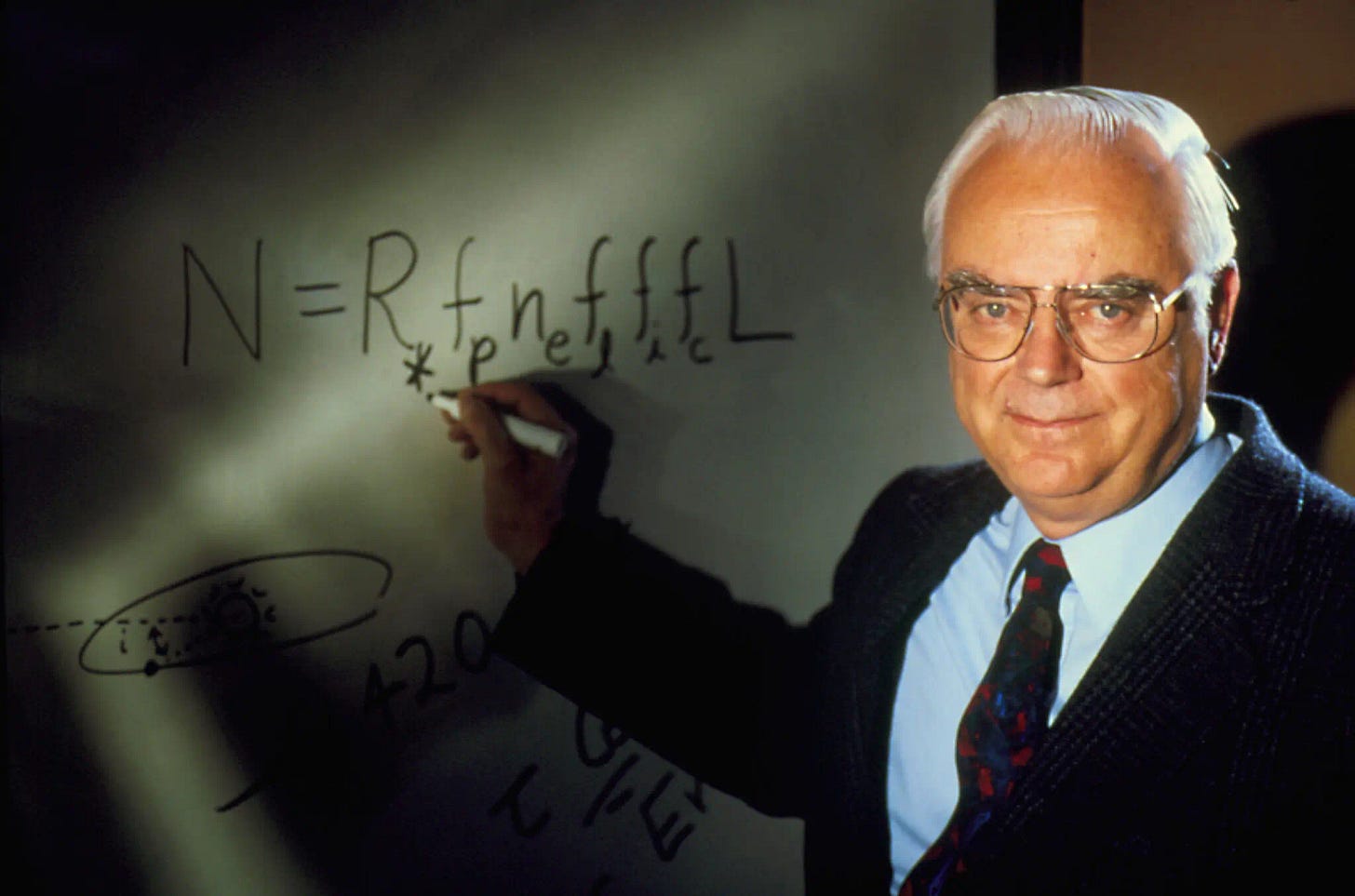

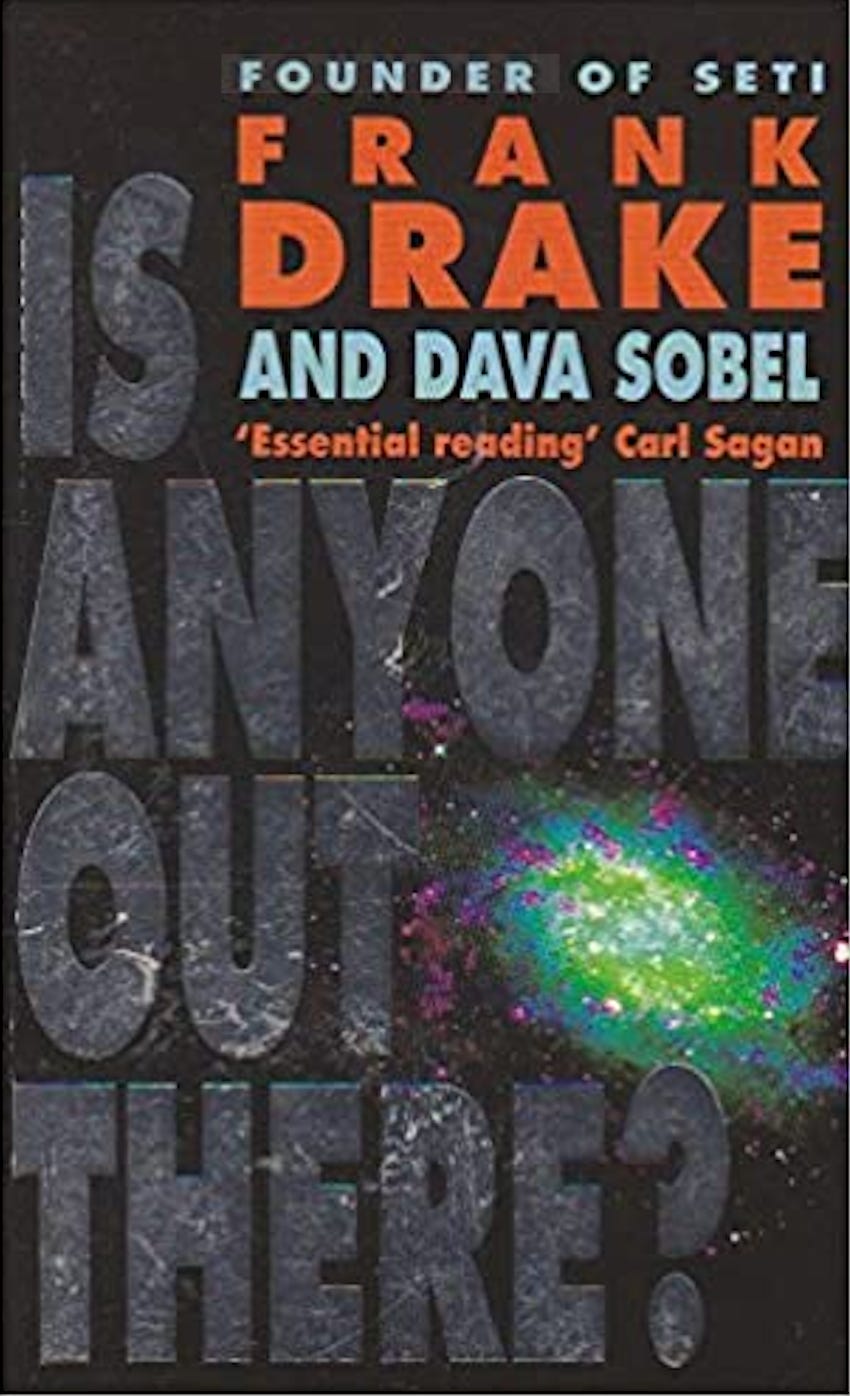





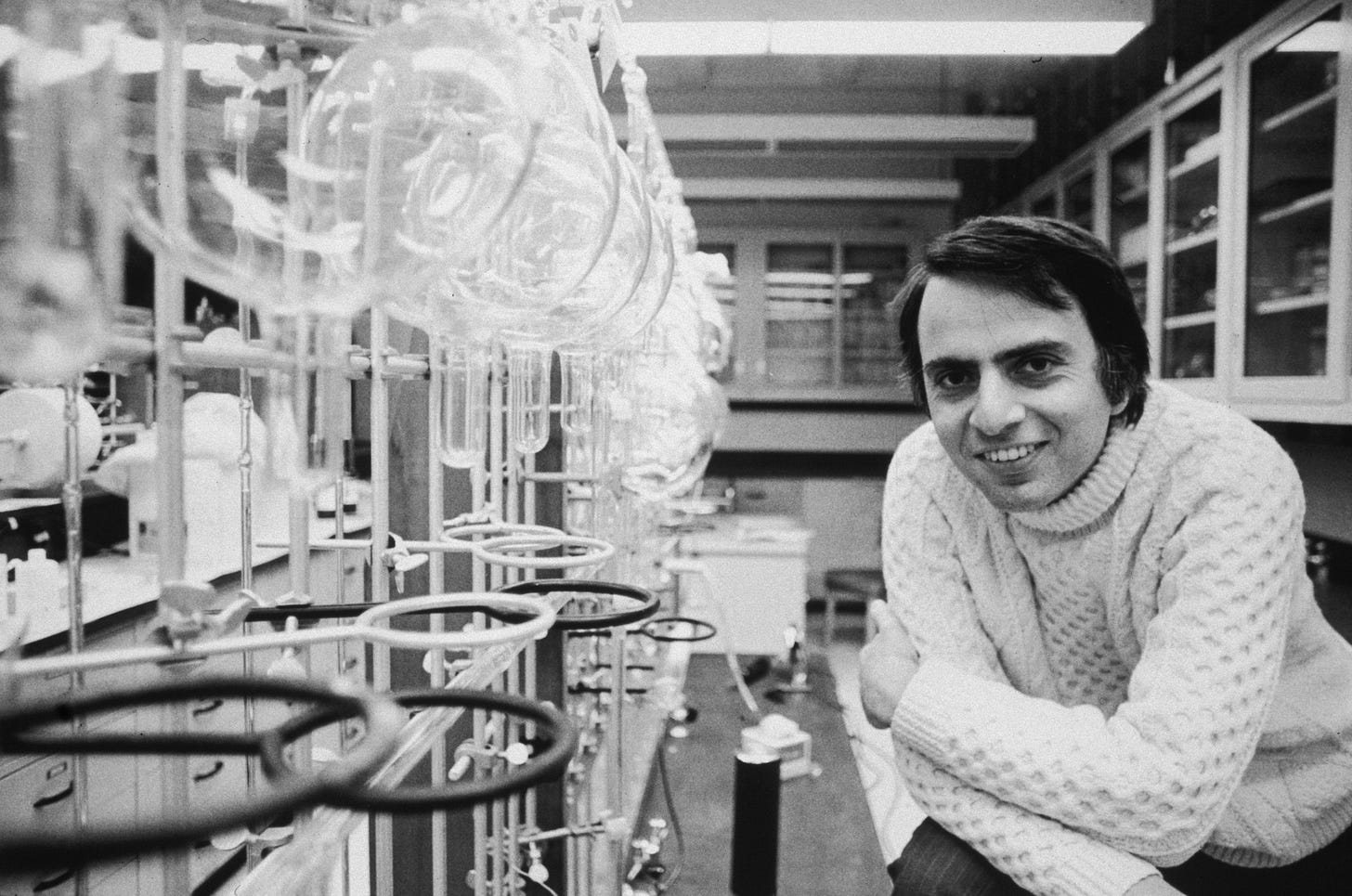
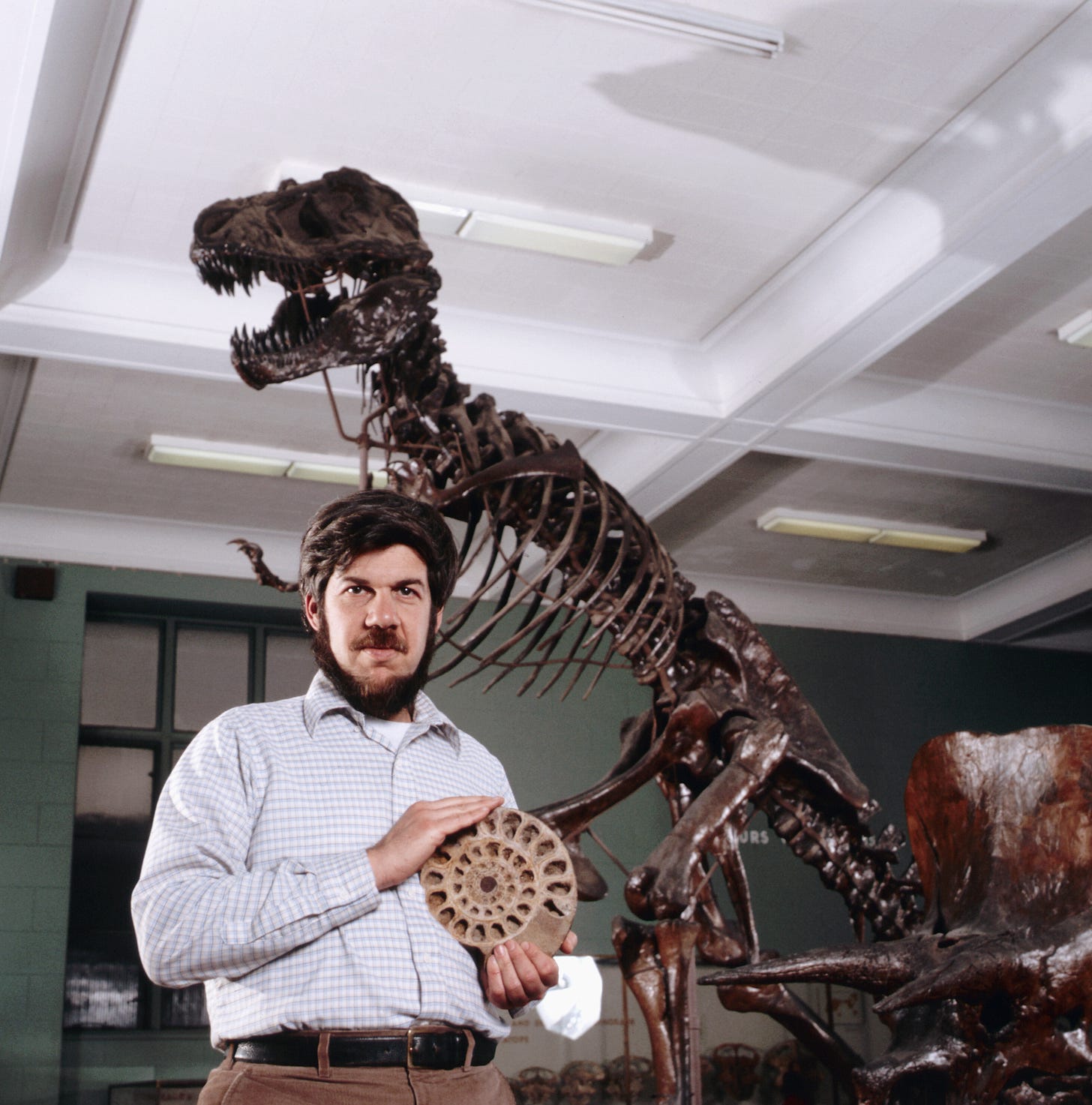
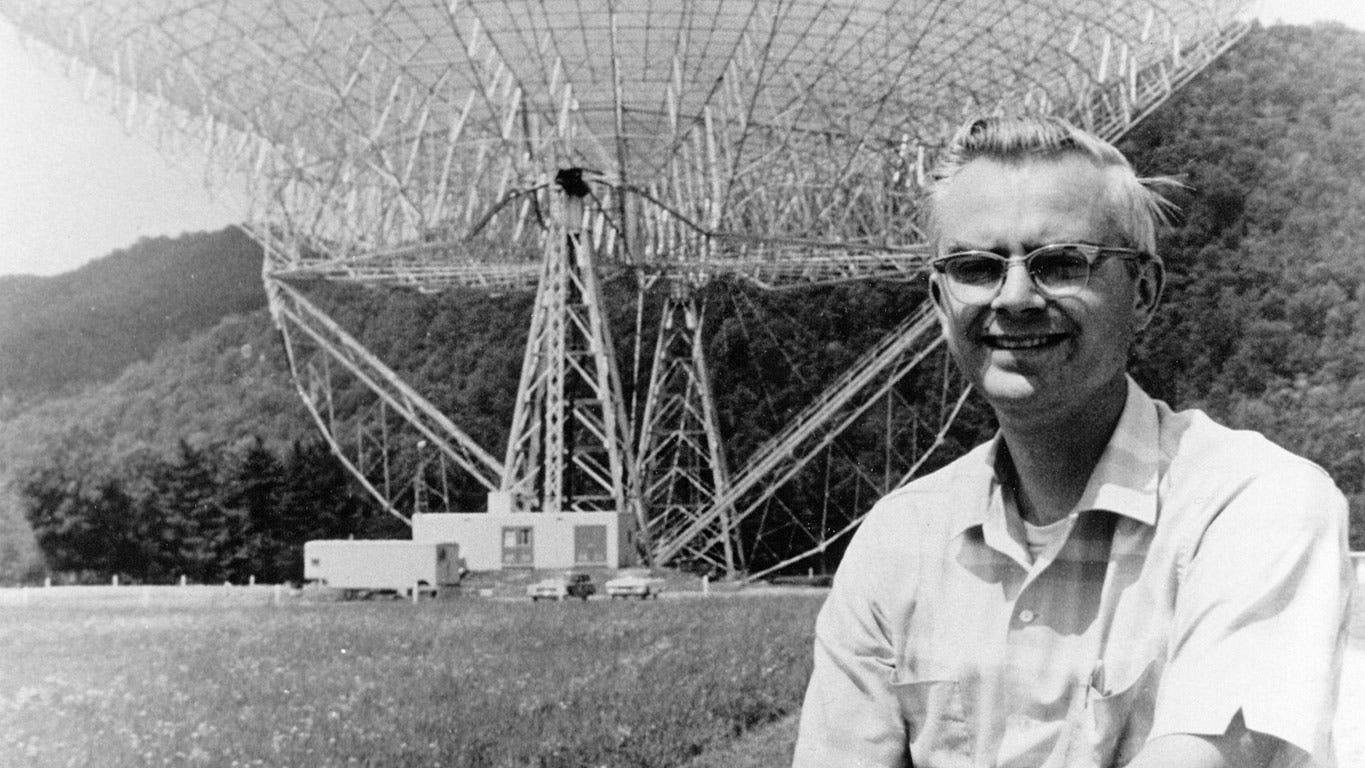
Pieces like this are exactly why I subscribe. Beautiful.
UFOs are real, of course.
Take a look at this UFO video:
UFO Video:
One of the World’s Best UFO Videos
(Aerial Footage) –
Tokyo, Japan – Unknown Date
(Recorded by NHK, Japan’s State Broadcaster)
Source: TV UFO Footage (my YouTube Channel)
This is one of the world’s best UFO videos, in my opinion.
The unknown object (white light) which flies slowly over Tokyo – is first seen in the upper left corner of the screen.
When the UFO is closest to the helicopter camera, one can see the body of the large elongated (or circular) UFO, and that it has large red and white pulsating lights (4 lights). The colours of the three blinking/pulsating lights varies between white and red. The largest light (white) does not pulsate.
The UFO seems to stop near the Tokyo Tower for a short while. It appears that the NHK camera operator notices the UFO, because the camera follows the UFO for a short while.
The fact that the video comes from Japan’s state broadcaster means that it is unimpeachable.
The footage comes from NHK World TV’s Aerial Tokyo channel, aired on 13 April 2022, at approximately 7:00 p.m. CET. This channel can be found in the German TV app, TV PRO.
https://www.youtube.com/watch?v=XBVkgxy5yqU